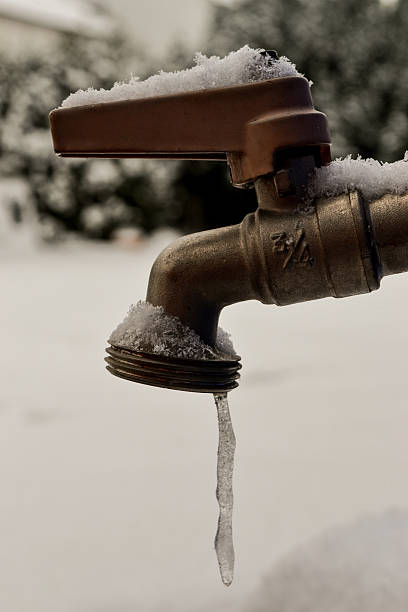What're your ideas regarding How to prepare your home plumbing for winter weather?

Winter can damage your plumbing, especially by freezing pipelines. Here's exactly how to prevent it from happening and what to do if it does.
Introduction
As temperature levels drop, the risk of frozen pipelines rises, possibly resulting in costly repairs and water damage. Comprehending exactly how to prevent icy pipelines is important for house owners in cold environments.
Prevention Tips
Insulating vulnerable pipes
Cover pipes in insulation sleeves or utilize heat tape to safeguard them from freezing temperatures. Focus on pipelines in unheated or exterior areas of the home.
Home heating methods
Maintain indoor areas effectively warmed, especially locations with pipes. Open closet doors to permit cozy air to distribute around pipes under sinks.
How to recognize frozen pipes
Search for lowered water flow from taps, unusual odors or sounds from pipes, and visible frost on exposed pipes.
Long-Term Solutions
Architectural adjustments
Consider rerouting pipelines away from outside wall surfaces or unheated locations. Include added insulation to attic rooms, basements, and crawl spaces.
Upgrading insulation
Buy top quality insulation for pipes, attic rooms, and walls. Appropriate insulation aids maintain regular temperatures and lowers the threat of icy pipes.
Shielding Exterior Plumbing
Yard hoses and outdoor taps
Detach and drain yard tubes prior to winter season. Install frost-proof spigots or cover outdoor taps with protected caps.
Recognizing Frozen Pipelines
What triggers pipelines to ice up?
Pipes ice up when revealed to temperature levels below 32 ° F (0 ° C) for prolonged periods. As water inside the pipelines freezes, it expands, taxing the pipeline walls and potentially creating them to break.
Risks and problems
Icy pipelines can bring about water disturbances, residential or commercial property damages, and costly repair services. Ruptured pipelines can flooding homes and create extensive architectural damages.
Indicators of Frozen Piping
Recognizing icy pipes early can prevent them from bursting.
What to Do If Your Pipes Freeze
Immediate actions to take
If you believe frozen pipes, keep taps open to eliminate pressure as the ice melts. Make use of a hairdryer or towels soaked in warm water to thaw pipes gradually.
Verdict
Protecting against frozen pipelines needs positive procedures and quick feedbacks. By recognizing the reasons, indications, and safety nets, property owners can protect their pipes during cold weather.
5 Ways to Prevent Frozen Pipes
Drain Outdoor Faucets and Disconnect Hoses
First, close the shut-off valve that controls the flow of water in the pipe to your outdoor faucet. Then, head outside to disconnect and drain your hose and open the outdoor faucet to allow the water to completely drain out of the line. Turn off the faucet when done. Finally, head back to the shut-off valve and drain the remaining water inside the pipe into a bucket or container. Additionally, if you have a home irrigation system, you should consider hiring an expert to clear the system of water each year.
Insulate Pipes
One of the best and most cost-effective methods for preventing frozen water pipes is to wrap your pipes with insulation. This is especially important for areas in your home that aren’t exposed to heat, such as an attic. We suggest using foam sleeves, which can typically be found at your local hardware store.
Keep Heat Running at 65
Your pipes are located inside your walls, and the temperature there is much colder than the rest of the house. To prevent your pipes from freezing, The Insurance Information Institute suggests that you keep your home heated to at least 65 degrees, even when traveling. You may want to invest in smart devices that can keep an eye on the temperature in your home while you’re away.
Leave Water Dripping
Moving water — even a small trickle — can prevent ice from forming inside your pipes. When freezing temps are imminent, start a drip of water from all faucets that serve exposed pipes. Leaving a few faucets running will also help relieve pressure inside the pipes and help prevent a rupture if the water inside freezes.
Open Cupboard Doors
Warm your kitchen and bathroom pipes by opening cupboards and vanities. You should also leave your interior doors ajar to help warm air circulate evenly throughout your home.

I have been very fascinated by Helpful Tips to Prevent Frozen Pipes this Winter and I really hope you enjoyed the page. In case you appreciated our article please don't forget to pass it around. We enjoy your readership.
Schedule Now!